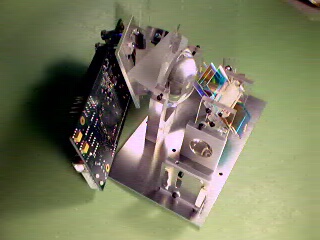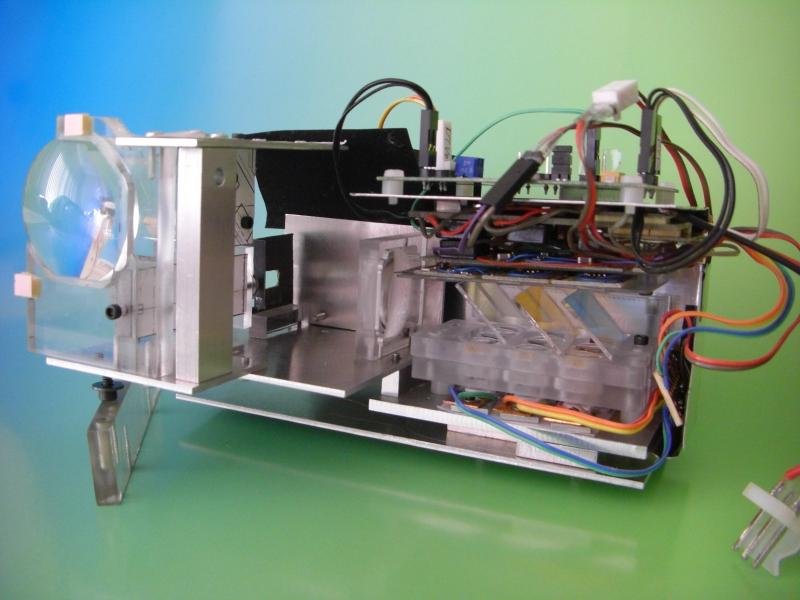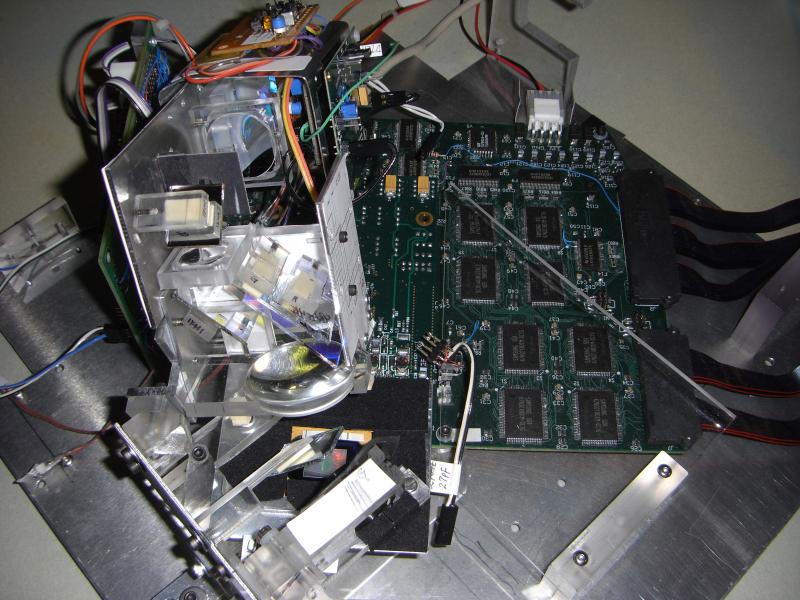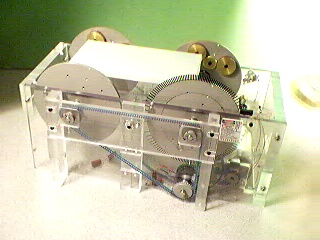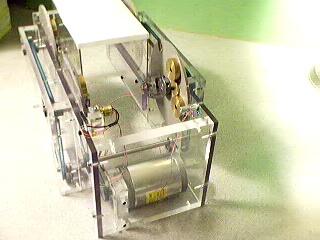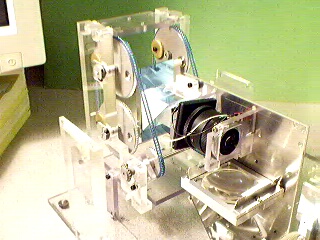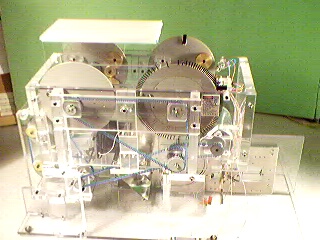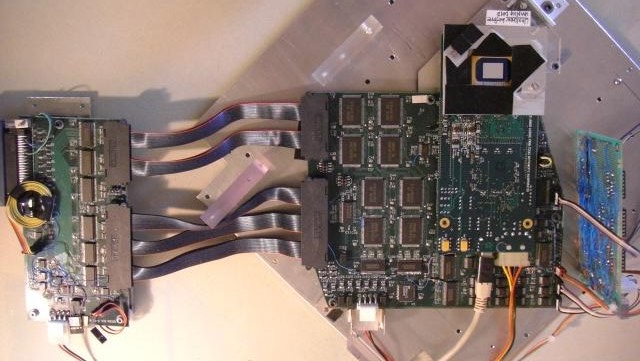v3Di V3D Interaction
The Technology Leader in Volumetric 3D Display
Technologies
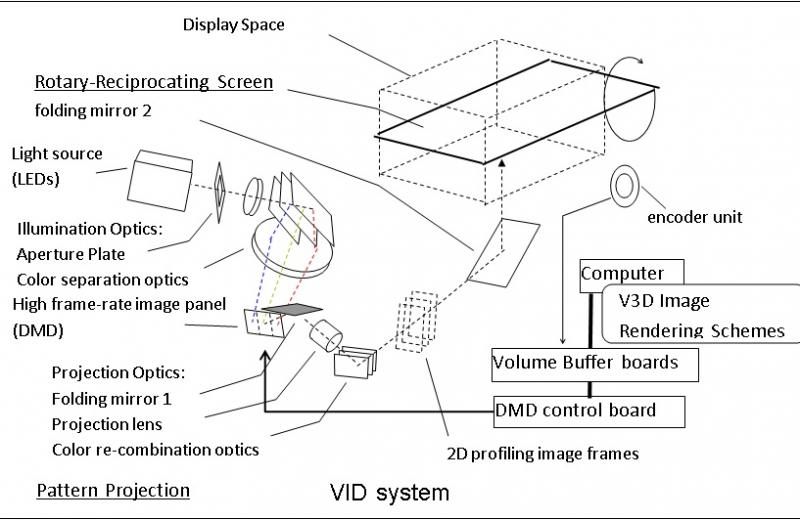
The VID creates images based on after-image effect by projecting successive 2D image frames onto a moving 2D screen.
Novelty and features of the system:
VID technology is the first and currently the only V3D display technology in the world capable of full motion parallax (horizontal and vertical, without the need of head tracking) with over 2-Pisolid viewing angle and no viewing artifacts in the volume.
- Full (over) hemispherical view abgle
- Full motion parallax
- Convertible functions: V3D mode, 2D mode, projector modes.
- Convertible form factor: low profile 2D mode/carrying mode.
- Simple and light-weight mechanical structure
- Color rendering method: creating high color capacity
- Image presentation method: displaying background of large view depth
Innovations in sub-system development that enable the system novelty and features:
The VID technology involves mechanical, optical, electronics and software innovation and development. Major innovations include:
- A "Pattern Projection" technique that allows the use of a single SLM (Digital Micro-mirror Device or Ferroelectric LCD) to project color V3D images.
- Algorithm/software for precisely processing 3D computer data (geometric primitives) into suitable combination of R G B pixels distributed in 3D space in order to form V3D images of high color level.
- New moving screen mechanisms using a novel motion mode, called Rotary Reciprocating, with mechanical relief and dynamic balancing design for smooth and quiet screen motion.
- A rapid focusing and zooming system using a moving thin wedge prism/reflector.
- Methods and systems for user-image interaction in V3D, allowing users to “reach into” display volume through a “virtual end”.
- Design of convertible multi-mode projection system, allowing the system to be used for V3D display, 2D rear projection and 2D front projection.
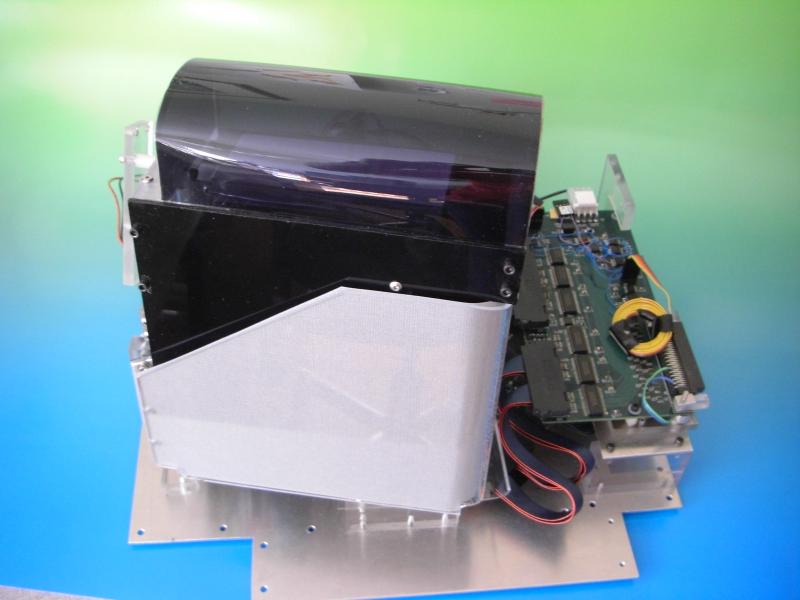
Pattern Illumination/Projection Techniques
A high frame-rate image panel is used to display the successive image frames. A "Pattern Projection" technique is applied to create colors on each image frame. The image panel is divided into 3 sub-panels and each sub-panel is illuminated by a different primary color (R, G or B), by using a color separation illumination system. In projection, the images of the 3 sub-panels are recombined into one color image frame.
Illumination/projection system prototype with the DMD module mounted at left (desktop system)
LED illumination module for transportable prototype (left). LED illumination/projection system prototype mounted to the DMD module and the high-speed volume vuffer boards (right)
Patents:
C. Tsao, US Pat. No. 6,961,045, "Pattern Projection Techniques for Volumetric 3D Displays and 2D Displays", issued 2005/11/1
C. Tsao, Japan Pat. No. 4706944, issued 2011/3/25
C. Tsao, Taiwan Invention Pat. No. 194557
V3D Image Rendering Schemes
Special "V3D Image Rendering Schemes" are applied to create additional color variations by making proper distribution and mixing of pixels in each frame. The DMD-based high frame rate projector plus the Pattern Projection techniques project closely packed image frames to the "Rotary-Reciprocating" screen, which allows a roughly orthogonal stack of image frames. The display space is filled with voxels so that solid surfaces and textures of colors can be rendered and displayed.
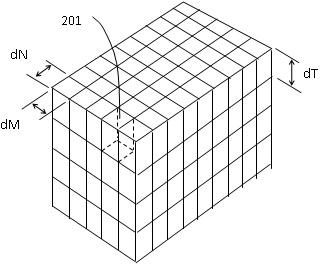
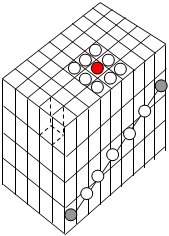
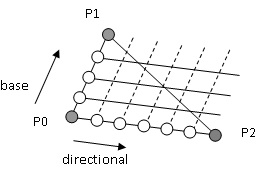
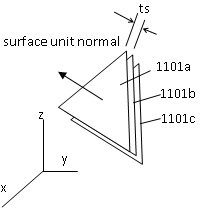
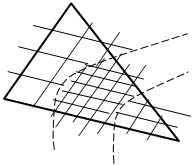
Pixel dilation, point density control, multi-layer surface rendering and variable point density rendering are used to rendering high level of colors and textures.
Patents:
C. Tsao, US Pat. No. 7,701,455, "Data Rendering Method for Volumetric 3D Displays", issued 2010/4/20
C. Tsao, US Pat. No. 7,804,500, "Method of Displaying Volumetric 3D Images", issued 2010/9/28
Japan pending.
Moving Screen Mechanism (for portable system)
Simple, ultra lightweighted mechanism for portable system.
(To be published)
Convertible Multi-mode Projector System
(To be published)
Moving Screen / Optics (for desktop system)
The screen moves by a "Rotary-Reciprocating motion", which generates a reciprocating-like motion by using smooth and simple rotary mechanisms, with mechanical relief and dynamic balancing design for smooth and quiet screen motion.
Display Unit (rotary reciprocating screen) prototype, similar mechanism used on the desktop system prototype
Moving reflector unit and projection optics (left)
System assembly (right)Patents:
C. Tsao, US Pat. No. 6,765,566, "Method and Apparatus for Displaying Volumetric 3D Images", issued 2004/10/21
C. Tsao, US Pat. No. 7,933,056, "Method and Systems of Rapid Focusing and Zooming for Volumetric 3D Displays and Cameras", issued 2011/4/26
C. Tsao, Japan Pat. No. 4605337, issued 2010/10/15
C. Tsao, Taiwan Invention Pat. No. 222605, issued 2004/10/21
Human-image Interaction Methods and Systems
(To be published)
Electronics
High-speed digital volume buffer electronics boards and data I/O system for transmission, storage and updating SLM image at high speed in order to display V3D images.
Elecgtronics of the tranportable prototype: (From left) SCSI connector, 32-bit rounting board, high-speed connector, 64-bit 120 MHz volume buffer borad, DMD board, interface board to moving screen
Copyright 2012 v3di.com. All rights reserved.

